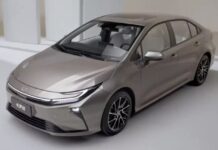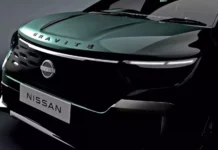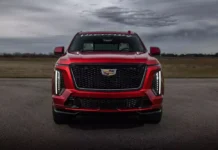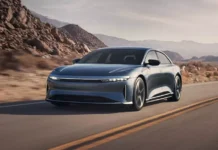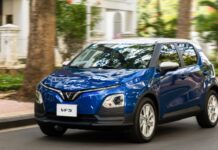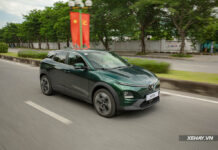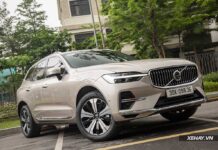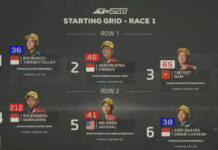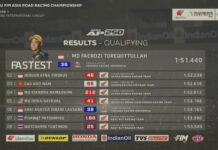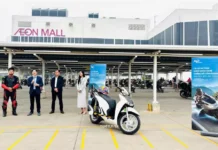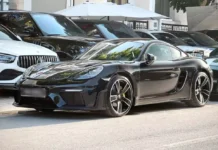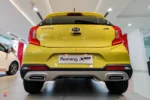While foreign automakers once played a pivotal role in the early development phase, many are now falling behind as Chinese companies experience a strong rise. International investors will need to exercise caution when facing the long-term equation of China’s intentional industrialization.
The Auto Industry – A Key Focus of China’s Industrial Policy
The automotive industry has long been a focal point of China’s industrial policy. It was the first sector to have a national development plan after the country opened up its economy in the 1980s, and it continues to receive close protection and support from the government. State ownership, absorption of foreign technology and know-how, centralized production, trade protectionism, domestic enterprise favoritism, and massive subsidies are the primary tools used to boost this industry. The initial goal was to create Chinese automakers strong enough to compete both domestically and internationally.
State Ownership Characterized the Early Chinese Automotive Industry
Since the 1950s, state ownership has been a hallmark of China’s automotive industry. The central government consecutively established the First Auto Works (FAW, 1953) and the Second Auto Works (now Dongfeng, 1969). Other conglomerates like Guangzhou Auto Group (GAC, 1955), Shanghai Automotive Industry Corporation (SAIC, 1955), Nanjing Auto Corporation (NAC, 1947), and Beijing Auto (BAIC, 1958) were formed through mergers and nationalization of local private companies. Today, FAW, Dongfeng, SAIC (merged with NAC), GAC, and BAIC remain China’s largest automotive enterprises.
China continually sought to learn from and absorb technology from foreign automakers. FAW initially imported designs and equipment from the Soviet Union and Eastern Europe. In the 1960s and 1970s, European and Japanese companies supported China in developing commercial vehicles. When the country opened up its economy in the 1980s and 1990s, China exchanged market access for technology. Foreign automakers were limited to two joint ventures with ownership not exceeding 50%. They had to collaborate with designated partners, locate factories in planned sites, and transfer technology, train engineers, and increase localization rates. The first joint ventures were BAIC–American Motors (1983), SAIC–Volkswagen (1984), and GAC–Peugeot (1985). By 1991, an internal report assessed that the presence of foreign companies had advanced China’s automotive industry by 30 years, while also boosting the machinery, chemical, electrical, and instrumentation industries.

Expanding the Development of Private Enterprises
In the 1990s and 2000s, China’s industrial policy aimed to consolidate the automotive industry into 2–3 large-scale conglomerates capable of competing globally by 2010, along with 6–7 supplementary manufacturers and a host of parts suppliers. While prioritizing state-owned ventures, private enterprises like Great Wall (1984), Geely (1986), and BYD (1995) capitalized on local bank funding and stock markets in China, Hong Kong, and the US to develop outside the plan. By 2009, China had approximately 145 automotive manufacturers, most operating below the efficient scale.
Tariffs and Localization Regulations Protect the Domestic Automotive Industry
Protectionist measures such as tariffs and localization regulations shielded the domestic automotive industry. Import tariffs on completely built-up vehicles exceeded 200% in the 1980s and 1990s, later decreasing to 25% in 2006 and 15% in 2018. SUVs and larger vehicles still face total tariffs of over 100% since 2008. Auto parts were once taxed at over 100% and subjected to stringent localization regulations in joint ventures. After China joined the WTO, part tariffs decreased to 10% (2006) and 6% (2018).
The combination of preferential policies, transportation infrastructure development, rising consumer demand, and robust investment from both domestic and foreign players propelled China’s automotive output: from 5,200 vehicles in 1985 to 40,000 (1990), over 600,000 (2000), 13.9 million (2010), 21 million (2015), and more than 31 million vehicles in 2024 – accounting for 32% of global output, higher than the combined production of the US, Japan, India, and South Korea.
However, the goal of developing successful domestic brands remained challenging. In 2004, only 2% of SAIC’s vehicles were of indigenous design; the rest were models from GM and Volkswagen. By 2019, despite advancements in technology and manufacturing, state-owned enterprises had yet to establish globally competitive brands.
Electric Vehicles Transform the Landscape of China’s Automotive Industry
The landscape began to shift with the emergence of electric vehicles (EVs). EVs were incorporated into the 10th Five-Year Plan (2001). In 2007, Wan Gang – a former Volkswagen engineer – became the Minister of Science and Technology and convinced China’s leadership that EVs presented an opportunity for the country to lead the world. Subsequently, a series of supportive policies for EVs were implemented, ranging from planning, subsidies, emission standards, infrastructure development, restrictions on gasoline vehicles, to technology access, and new forms of protectionism. In 2018, Tesla became the first foreign automaker permitted to own 100% of its company in China, after pledging to support the domestic EV supply chain and export products from China. In 2022, 56% of Tesla’s global output originated from China, with 40% being exported.

Nio – A Chinese Electric Vehicle Brand
Total central government subsidies for EVs during 2009–2023 are estimated to reach $231 billion, including R&D grants, tax exemptions, loss compensations for enterprises, and infrastructure construction preferences. On average, each EV buyer received support ranging from $14,000 (2018) down to $4,800 (2023), before the subsidies were completely phased out. Local governments also contributed to price subsidies. The subsidies primarily favored domestic companies, particularly those using domestically produced batteries. Emission credit regulations compelled automakers to invest in EVs. The share of EVs in China’s automotive market rose from 3.2% (2017) to 41% (2024), accounting for nearly 70% of global EV sales.
BYD – a company that received a $232 million investment from Warren Buffett’s Berkshire Hathaway in 2008 – led EV sales in 2024 with a 34% market share, followed by Geely (8%), SAIC (7%), Tesla (6%), and Changan (6%). In the top 10, Tesla is the only foreign brand. BYD captured 16% of the total automotive market (including EVs and gasoline vehicles), surpassing Volkswagen (12%) and Toyota (7%).
As the EV market share grew, foreign brands gradually lost ground: from 64% (2020) to 35% (2024). Specifically, in 2024, German car sales decreased by 13.3%, Japanese car sales by 17.7%, and American car sales by 23.1%. VW and GM – the two foreign giants in China – were significantly impacted. Analysts criticized them for underestimating the capabilities of Chinese companies and EV technology. The COVID-19 pandemic further exacerbated the issue as foreign executives could not directly oversee operations in China. Recently, many foreign automakers have started investing in Chinese companies to access EV technology.
The surge in EV capabilities and the decline in gasoline vehicle sales led to overcapacity in China’s automotive industry. Of the 5.9 million vehicles exported in 2024, 4.9 million were gasoline-powered. The primary export brands included Chery, SAIC, Changan, Geely, Great Wall, BYD, BAIC, Tesla, JAC, and Dongfeng – all Chinese brands except for Tesla. Many countries worry that this excess capacity will lead to China dumping prices and dominating the global market.
The Expansion of China’s Automotive Industry and the Challenges for International Automakers
The success of China’s automotive industry stands as a testament to the power of long-term strategic policies, state resources, adaptability, and the ability to absorb foreign technology. The combination of policies, market scale, foreign investment, and development beyond plans propelled China to lead the gasoline vehicle market in 2009, even though it fell short of its goal to build strong domestic brands. Only with the emergence of EVs – a new technology where foreigners no longer held a significant advantage – did the industrial policy truly come into its own.
The question for international automakers is: how can they regain market share in China while protecting their positions in their home countries and third markets? Some choose to invest in China, while others reconsider their joint venture partnerships. Meanwhile, Western governments are implementing protectionist policies, subsidies, and consumption guidance – the very strategies China employed. However, this is challenging for economies accustomed to prioritizing consumer interests. The EU has imposed tariffs ranging from 8% to 35% on Chinese EVs, while the US has levied tariffs of up to 100%.
China’s automotive industry didn’t develop precisely according to the initial plan, but it demonstrated that long-term policy commitment, technology transfer, and a unique political system can make a significant difference. Western businesses and governments, with their shorter-term outlooks, will face difficulties in countering China’s long-term strategy.

